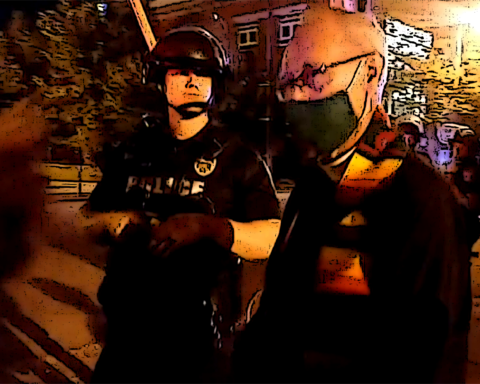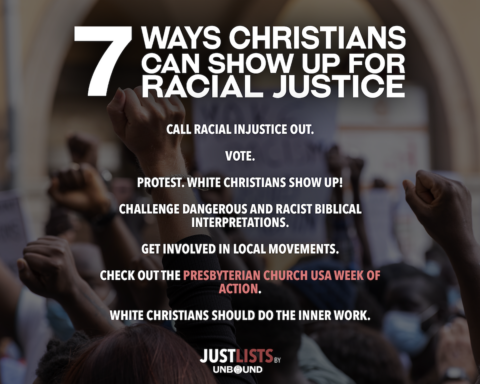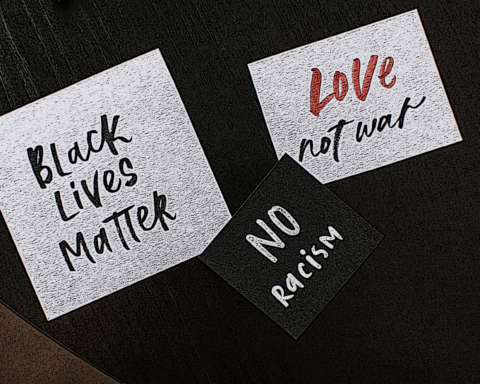The Social Contract We Have ‘Left Behind’

Consider this definition of justice from the Rev. J. Philip Wogaman, the retired pastor at Washington, D.C.’s Foundry United Methodist Church:
“Justice is the community’s guarantee of the conditions necessary for everybody to be a participant in the common life of society… If we are, finally, brothers and sisters through the providence of God, then it is just to structure institutions and laws in such a way that communal life is enhanced and individuals are provided full opportunity for participation.”
Rev. Wogaman’s words are a moral challenge to those of us who care about our public schools in the United States. In a democracy, we are responsible, through our elected representatives, for ensuring that our public institutions distribute opportunity to all children, not just to some. And yet today, the laws and policies that shape public schools – one of our society’s primary civic institutions – seem so contrary to the Rev. Wogaman’s vision.
Four huge structural issues threaten the capacity of public schools to distribute educational opportunity among all children, especially in communities where there is concentrated poverty. These problems undermine the well-being of too many young people today. They threaten the very viability of the public schools that we have counted on for so long as the one institution that can ensure that all children are equipped to realize their promise.
Poverty and Inequality
The United States tolerates an alarming child poverty rate of well over 20% – the highest rate of child poverty in any of the world’s so-called industrialized nations. We ought to be outraged, but we almost never talk about this.

Photo Credit: Huffington Post
Poverty has particularly dire implications for public schools in our large cities. Educator Mike Rose and historian Michael B. Katz describe the greatest problem for public education in America: “Throughout American history, inequality—refracted most notably through poverty and race—has impinged on the ability of children to learn and of teachers to do their jobs.” (Public Education Under Siege, p. 228)
The Southern Education Foundation recently documented that 51% of the children in U.S. public schools now qualify for free and reduced price lunch, classifying them as low-income. (Low-income is formally defined as 185% of the federal poverty line of $23,850 for a family of four.) These families are likely struggling to pay for food, housing, childcare, and transportation – all the things that make comfortable family life possible.
___________________________________________
In a democracy, we are responsible, through our elected representatives, for ensuring that our public institutions distribute opportunity to all children, not just to some.
___________________________________________
What I find even more troubling than the stark data about low-income families, however, is the Southern Education Foundation’s documentation of poverty concentration across America’s cities. SEF reports that: “The nation’s cities have the highest rates of low-income students in public schools. Sixty percent of the public school children in America’s cities were in low-income households in 2011. In 38 of the 50 states, no less than half of all children attending public schools in cities…were low income.”
 Low-income children make up 83% of all children in Mississippi’s cities, 78% in New Jersey’s cities, 75% in Pennsylvania’s cities, and 73% in New York’s cities. In Georgia, Louisiana, Illinois, and Oklahoma, according to the report, poor children also make up more than 70% of the public school enrollment in cities.
Low-income children make up 83% of all children in Mississippi’s cities, 78% in New Jersey’s cities, 75% in Pennsylvania’s cities, and 73% in New York’s cities. In Georgia, Louisiana, Illinois, and Oklahoma, according to the report, poor children also make up more than 70% of the public school enrollment in cities.
This is, of course, not new information. We know from Thomas Timar at the University of California at Davis that, “While manifestations of the achievement gap are to be found in rural, suburban, and urban areas, the evidence is rather compelling that the achievement gap is largely a problem of urban education: Black children are more likely to live in conditions of concentrated poverty…. Child poverty rose in nearly every city from 1970-1990…. Urban students are more than twice as likely to attend high-poverty schools…. In 1990, the child poverty rate for the United States as a whole was 18%. For the ten worst cities it was between 40 and 58%.” (Narrowing the Achievement Gap, p. 232)
___________________________________________
Low-income children make up 83% of all children in Mississippi’s cities, 78% in New Jersey’s cities, 75% in Pennsylvania’s cities, and 73% in New York’s cities.
___________________________________________
In America’s large cities, many children live in extreme poverty, that is, half the federal poverty line – roughly $11,925 for a family of four. Children in such circumstances are very likely to struggle at school. The census tells us that while 12% of white children in the United States are poor, 39% of Black children and 35% of Hispanic children live in poverty—more than a third of the children in each of those groups.
 Standardized test scores have always served in large part as a wealth indicator. According to academics writing for the Oxford University Press: “As a group, students labeled as economically disadvantaged or poor never score higher on standardized tests than their non-disadvantaged peers in any state on any grade level currently tested under NCLB.” (Closing the Opportunity Gap, p. 112)
Standardized test scores have always served in large part as a wealth indicator. According to academics writing for the Oxford University Press: “As a group, students labeled as economically disadvantaged or poor never score higher on standardized tests than their non-disadvantaged peers in any state on any grade level currently tested under NCLB.” (Closing the Opportunity Gap, p. 112)
And from long-time education researcher David Berliner: “For reasons that are hard to fathom, too many people believe that in education the exceptions are the rule… These stories of triumph by individuals who were born poor, or success by educators who changed the lives of their students, are widely believed narratives… But in fact, these are simply myths that help us feel good to be American… The general case is that poor people stay poor and that teachers and schools serving impoverished youth do not often succeed in changing the life chances for their students.”
Segregation by Income
 Our society continues to become increasingly segregated not only by race but also by income—with the rich living near each other in wealthy enclaves and the poor concentrated in intergenerational ghettos. Stanford University educational sociologist Sean Reardon documents that the proportion of families in major metropolitan areas living in either very poor or very affluent neighborhoods increased from 15% in 1970 to 33% by 2009; meanwhile, the proportion of families living in middle income neighborhoods declined from 65% in 1970 to 42% in 2009.
Our society continues to become increasingly segregated not only by race but also by income—with the rich living near each other in wealthy enclaves and the poor concentrated in intergenerational ghettos. Stanford University educational sociologist Sean Reardon documents that the proportion of families in major metropolitan areas living in either very poor or very affluent neighborhoods increased from 15% in 1970 to 33% by 2009; meanwhile, the proportion of families living in middle income neighborhoods declined from 65% in 1970 to 42% in 2009.
Reardon also demonstrates that along with growing residential inequality is a simultaneous jump in an income-inequality school achievement gap among children and adolescents. The achievement gap between students with income in the top ten percent and students with income in the bottom ten percent is 30-40% wider among children born in 2001 than those born in 1975, and is now twice as large as the black-white achievement gap.
Inadequate and Unequal Funding
Despite the special challenges for school districts that serve a large number of children in poverty, our elected officials fail to address the crisis in public funding of many of the services our society has traditionally supported—including public education. According to the Center on Budget and Policy Priorities, 30 states are currently spending less on public education (in inflation adjusted dollars) than they did before the 2008 recession hit. Thirteen states have cut school funding by more than 10%.
 While recent news indicates that some state budgets are beginning to spring back, too many governors are responding by proposing tax cuts instead of restoring budget cuts that have been made since the recession began, many of them to public schools. A serious crisis across many state budgets endangers public schools and many other public services that affect the most vulnerable families. Funding of public education will continue to be an overwhelming problem until we as citizens are willing to tax ourselves more progressively and distribute school revenue more fairly.
While recent news indicates that some state budgets are beginning to spring back, too many governors are responding by proposing tax cuts instead of restoring budget cuts that have been made since the recession began, many of them to public schools. A serious crisis across many state budgets endangers public schools and many other public services that affect the most vulnerable families. Funding of public education will continue to be an overwhelming problem until we as citizens are willing to tax ourselves more progressively and distribute school revenue more fairly.
Our most urgent educational priority as a society must be to invest in improving the schools of our poor communities – especially big city school districts where poverty is concentrated – rather than punishing them, punishing their teachers, closing these schools, or privatizing them.
Punishing Schools in Poor Communities
Finally, the blame for these problems is being grossly misplaced. While our political leaders are blaming teachers and their unions and compulsively collecting data, we are not even talking about poverty, racial and economic segregation, and unequal funding of public schools. Leaders in both political parties are instead pushing privatization, as though that were a solution to the real problems posed by child poverty, growing segregation by income accompanying widening inequality, and the crises in state budgets.

Our school reform policy is being driven by the conditions required for states and school districts to apply for federal funds through the Race to the Top, School Improvement Grant, and No Child Left Behind waivers. To qualify, school districts must promise to institute punitive turnarounds for schools unable to raise scores, turnaround plans that include school closure, rapid privatization through the opening of charter schools, and punishments for teachers based on their students’ scores.
Federal school “reform” policies too often exacerbate challenges for big city school districts. For example, over 90% of the students affected in Chicago by the recent closing of 50 elementary schools (and the subsequent relocation of the students) are poor and African American. Education historian Diane Ravitch warns: “The federal regulations are like quicksand: the more schools struggle, the deeper they sink into the morass of test-based accountability. As worried families abandon these schools, they increasingly enroll disproportionate numbers of the most disadvantaged students, either children with special needs or new immigrants…. Low grades on the state report card may send a once-beloved school into a death spiral.”
Privatization

Instead of seeking the public good by attending to these serious issues with our nation’s public schools, today’s school reform emphasizes competition, rewards and punishments, and privatization. The latter occurs when public schools, previously accountable to public boards of education, are turned over to private managers or private owners. State legislatures, which had tried to proceed cautiously in the experimentation with privatization by setting caps on the authorization of new charter schools in any one year, eliminated these caps in 2009 as a federal requirement for states to enter the competition for Race to the Top grants. Race to the Top thereby opened the floodgates for privatization.
School privatization schemes today include: vouchers, public funds turned into scholarships to cover private and parochial school tuition; private contractors that design, analyze, and manage standardized testing, test grading, data collection and analysis, and provide other services like food preparation and security guards; charters and charter management organizations; and virtual e-schools, a subset of charter schools that serve home-schoolers over the internet.
___________________________________________
“Privatization is a kind of reverse social contract: it dissolves the bonds that tie us together into free communities and democratic republics.” -Benjamin Barber
___________________________________________
 School choice is designed to allow some children to ‘escape’ so-called ‘failing public schools,’ but the children who leave tend to be children whose families can play the system. The most vulnerable children are concentrated in the remaining neighborhood public schools, where funding is increasingly threatened by charters and vouchers. What we have seen in New Orleans – and what we can currently see happening in Chicago, New York, and other places that have used school choice as the centerpiece of school reform – is that somehow the most privileged and ‘desirable’ children and their parents get into charters, even when lotteries are employed. They know how to apply early before charters reach enrollment caps. And they are less likely to be pushed out if their scores will be a discredit to the charter school.
School choice is designed to allow some children to ‘escape’ so-called ‘failing public schools,’ but the children who leave tend to be children whose families can play the system. The most vulnerable children are concentrated in the remaining neighborhood public schools, where funding is increasingly threatened by charters and vouchers. What we have seen in New Orleans – and what we can currently see happening in Chicago, New York, and other places that have used school choice as the centerpiece of school reform – is that somehow the most privileged and ‘desirable’ children and their parents get into charters, even when lotteries are employed. They know how to apply early before charters reach enrollment caps. And they are less likely to be pushed out if their scores will be a discredit to the charter school.
It has been repeatedly documented that charters serve fewer disabled children (particularly those with serious disabilities), fewer English language learners, and fewer homeless children and children living in extreme poverty. The end result is that these children are relegated to what becomes a public school district of last resort, a school district for the children nobody else wants.
***
An education program based on privatization and school choice will be data-driven with accountability accomplished through widespread standardized testing. It will be based on values like competition, efficiency, deregulation, and creative disruption. Its proponents will understand education primarily as job preparation. The Rev. Jesse Jackson prophetically describes the reality of widespread school choice: “There are those who would make the case for a race to the top for those who can run. But ‘lift from the bottom’ is the moral imperative because it includes everybody.”
 A just system would seek to meet the needs and protect the rights of all children in our nation – no matter who their family or where they live or what their race, ethnicity, or economic level. All children deserve the opportunity to learn, which includes: a quality early childhood education; well-prepared and effective teachers; a curriculum that will equip students for college, work, and community; and equitably distributed instructional resources that include school funding, adequate libraries and computers, enough counselors to assist with college placement, and sufficiently small classes.
A just system would seek to meet the needs and protect the rights of all children in our nation – no matter who their family or where they live or what their race, ethnicity, or economic level. All children deserve the opportunity to learn, which includes: a quality early childhood education; well-prepared and effective teachers; a curriculum that will equip students for college, work, and community; and equitably distributed instructional resources that include school funding, adequate libraries and computers, enough counselors to assist with college placement, and sufficiently small classes.
In Consumed, a 2007 book by political philosopher Benjamin Barber about our society’s consumer culture, Barber contrasts a the consumerist vision of society based on privatization with the vision of a society based on the kind of social contract our faith calls us to support:
“Privatization is a kind of reverse social contract: it dissolves the bonds that tie us together into free communities and democratic republics. It puts us back in the state of nature where we possess a natural right to get whatever we can on our own, but at the same time lose any real ability to secure that to which we have a right. Private choices rest on individual power…. Public choices rest on civic rights and common responsibilities and presume equal rights for all. Public liberty is what the power of common endeavor establishes, and hence presupposes that we have constituted ourselves as public citizens by opting into the social contract.” (Consumed, pp. 143-144)
*****
AUTHOR BIO: Before retiring recently, Jan Resseger served for fifteen years as the (lay) Minister for Public Education and Witness in the United Church of Christ’s Justice and Witness Ministries. With Jan’s leadership the denomination worked for policy to improve, not punish, the public schools; reduce testing; ensure there is attention to vast resource opportunity gaps; advocate for schools that welcome children from all races and cultures; and speak for the public role of public education. Jan worked to connect advocates across the United Church of Christ with ecumenical partners through the National Council of Churches Committee on Public Education and Literacy and with community partners including the National Opportunity to Learn Campaign. Jan blogs regularly about issues concerning education at https://janresseger.wordpress.com/.
Read more articles in this issue: Pedagogy for the Distressed!
Read more articles in the “Struggles and Sacrifices” section!





Unbound Social